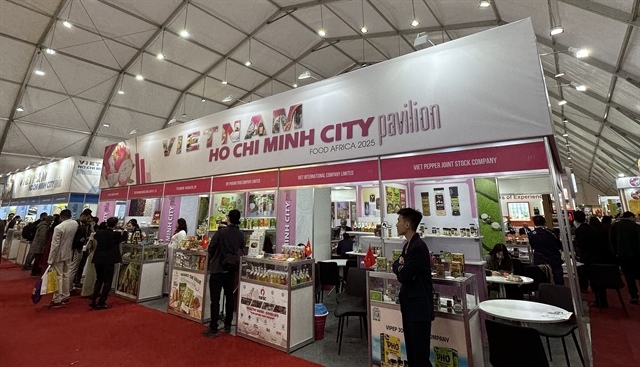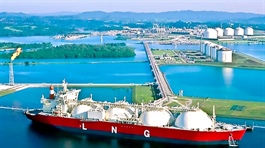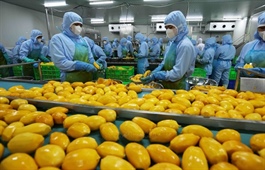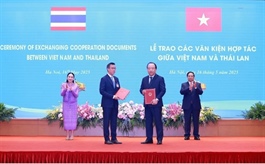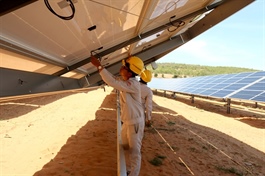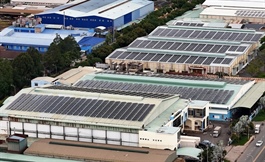Modern industrial system targeted
Modern industrial system targeted
The upcoming merger of provinces is to be synchronised with land use planning and simplified admin procedures to quickly form industrial metropolises and enhance high-tech manufacturing supply chains.
In mid-April, a scheme was approved on rearranging administrative units and local government organisations. In the north, the province of Bac Giang will be incorporated into Bac Ninh province; in the south, Ba Ria-Vung Tau and Binh Duong provinces will be incorporated into Ho Chi Minh City.
Bac Ninh and Bac Giang are jointly known as the industrial capital of the north and the production base of many large corporations. “Merging these two provinces is expected to bring many significant advantages, especially in strengthening the production supply chain and attracting foreign direct investment,” said Van Duc Phu, deputy manager in charge at the Northern Investment Promotion, Information, and Support Centre under the Ministry of Finance.
The merger will create an economic entity with a significantly larger scale, including a larger population of about 3.4 million people and a high aggregate regional GDP, potentially in the top five of the country. “This scale creates greater attractiveness for large-scale investment projects and global supply chains,” Phu added.
Both provinces have strengths in industry, especially electronics, with the presence of big corporations such as Samsung, Foxconn, and other suppliers. The merger will create an industrial metropolis with the largest industrial zone (IZ) network in the north, including more than 30 IZs, facilitating the linkage and development of supporting industries and logistics serving this industrial cluster.
“The merger helps optimise the use of infrastructure and common resources, allowing for more synchronous planning and development, helping to maximise decentralisation to local authorities at the provincial and communal levels and simplifying administrative procedures, such as reducing transaction costs, saving time and creating better conditions for businesses and investors,” Phu emphasised.
In the south, Phu said management boards of export processing zones and economic zones of the expanded Ho Chi Minh City need to plan priority developments, where to reserve large amounts of land to attract major groups, and where to locate satellite areas.
“The city should take advantage of its market of about 40 million people that includes the Mekong Delta, high-quality labour, a ready supply chain for a number of existing industries, and its integrated transportation system,” Phu said.
At present, Binh Duong is known as the capital of Vietnamese industry. According to the Vietnam Association of Real Estate Brokers, the province is the largest IZ area province with more than 12,700 hectares, accounting for one-quarter of the IZ area in the south and 13 per cent of the whole country.
According to industrial real estate consultants Redsunland, Binh Duong has been successful in luring overseas funding thanks to the strong development of IZs, but still needs to expand the port system, warehouses, telecommunications, and especially banking and financial facilities, which are concentrated in Ho Chi Minh City now.
Meanwhile, Ho Chi Minh City is the industrial-logistics centre of the country but has limitations in land and traffic infrastructure, although it has a sea frontage of about 23km. Ba Ria-Vung Tau has more than 300 km of coastline and Cai Mep-Thi Vai deepwater port, offering a great advantage in the supply chain and international trade.
The merger of provinces and cities not only expands the total land area but also puts land availability under unified management. Land use planning is to become more comprehensive and strategic, Redsunland said on its company website in April.
“This is also an opportunity for localities to develop supporting, specialised, ecological, and high-tech IZ complexes. Thereby, businesses can optimise operating costs and access labour resources more conveniently, and the strengths of each region will be maximised,” it added.
The restructuring of administrative units in Vietnam is a momentous move, reflecting a broader vision to streamline governance, improve infrastructure, and create more integrated urban-industrial ecosystems, according to Thomas Rooney, senior manager of Savills Hanoi’s Industrial Services.
“If carried out thoughtfully and systematically, the merger could lead to the formation of large-scale urban industrial regions that operate more efficiently and attract stronger foreign investment,” Rooney said. These markets could complement one another, leveraging mutual strengths while offsetting existing limitations. Moreover, it presents a valuable opportunity to accelerate urbanisation across localities.”
While it will certainly come with growing pains for investors, such as adjusting to new jurisdictions or shifting relationships between local authorities, it also opens up opportunities for more cohesive long-term planning and economic development.
“Adjusting administrative boundaries will likely have ripple effects on land-related procedures,” Rooney explained. “In the short term, we may see some delays or confusion as new authorities take over and regulations get realigned. However, with clear communication and coordination between departments, this transition could simplify processes in the long run.”
In the longer term, it could also encourage more consistent and transparent permitting frameworks across merged zones, which investors would welcome, he added. “The downside is that during the transition period, inconsistencies or overlaps in policies could lead to bottlenecks if not managed proactively.”
However, if this restructuring is carried out in tandem with infrastructure investment and improved transport connectivity, it could present an opportunity to expand the labour supply pool, enhance recruitment quality, and ultimately improve living and working conditions for workers in the long term, Rooney added.
- 10:01 19/05/2025





